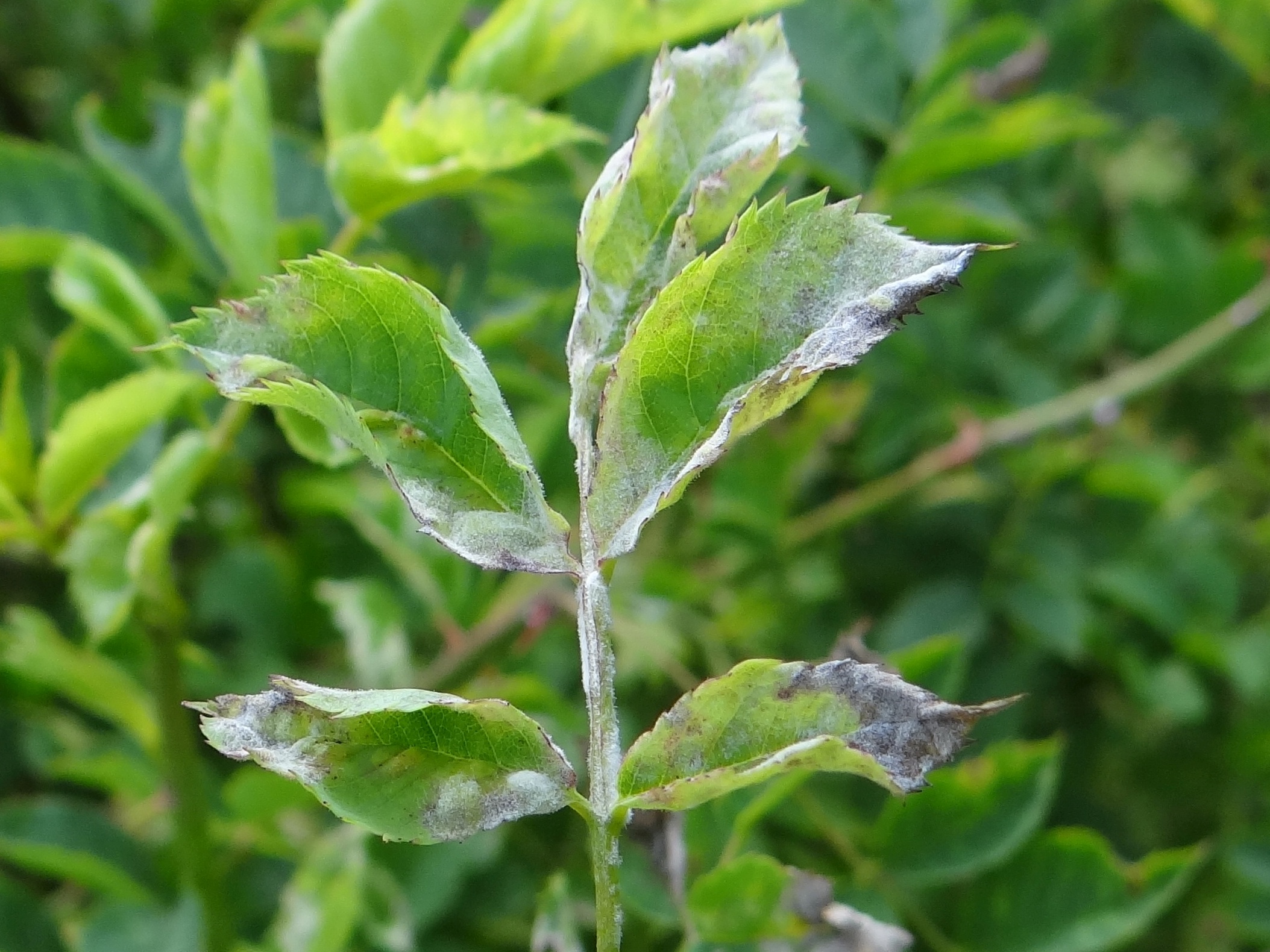
Powdery mildew
Podosphaera pannosa
What is Powdery mildew (Podosphaera pannosa)?
Rose powdery mildew (Podosphaera pannosa) is a fungal disease that affects rose plants worldwide. It is characterized by a white to pale-grey powdery growth on leaves, stems, and buds. The disease distorts plant tissues, stunts bud growth, and results in disfigured flowers. Rose powdery mildew is most prevalent in warm, dry climates followed by cool, humid nights. It spreads through wind-dispersed spores and can survive in buds, emerging with the appearance of flowers. Infected plants show visible powdery growth and suffer economic losses due to reduced flower quality.
How does Powdery mildew (Podosphaera pannosa) occur?
Powdery mildew (Podosphaera pannosa) reproduces in two ways. In cooler climates, it forms special structures called cleistothecia that release spores in the spring. These spores start new infections. In warmer regions, it reproduces using tiny spores called conidia. These spores can spread through the air and infect plants throughout the year, including when flowers start to bloom. Both types of spores help the powdery mildew fungus reproduce and continue to affect plants.
Symptoms
1 -
Podosphaera pannosa can cause damage to plants by distorting leaves, stunting bud growth, and resulting in disfigured flowers, reducing the economic value of the affected plants.
Solutions
1 - Cultural Control
• Check plants in the nursery for any powdery mildew infections before planting. • Space roses to allow for proper air circulation and reduce humidity. • Plant roses in full sun, as ultraviolet light can kill fungal spores. • Maintain good soil drainage and water the plants regularly, avoiding overhead and evening watering that can increase humidity. • Avoid over-fertilizing with high nitrogen fertilizers, as they can promote weak growth that is more susceptible to the disease. • Avoid touching healthy leaves with hands or pruning shears to prevent disease from spreading. Sterilize pruning tools with bleach after use. • Weed around plants to minimize humidity levels. • Remove heavily infected plant parts before applying fungicides.
2 - Biorational treatments
• Neem oil or other plant oils such as garlic, corn, rosemary, thyme, and clove oils. • Horticultural oil. • Sulphur (lime or wettable) or copper compounds like copper sulfate, cupric hydroxide, or cuprous oxide. • Potassium bicarbonate (like sodium bicarbonate). Note: Check organic certification regulations before using these treatments.
3 - Applications of Fungicides
1. Protectant fungicides: Examples include mancozeb, mancozeb/sulphur, and mancozeb/captan. These should be sprayed every two weeks. 2. Systemic, curative, or eradicant fungicides: Examples include bitertanol, difenoconazole, and trifloxystrobin/tebuconazole. Follow the manufacturer's directions and avoid consecutive applications of the same fungicide to prevent the development of resistant strains.
